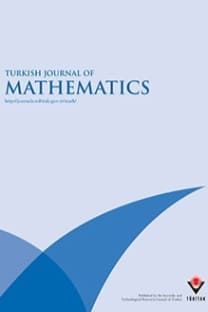On near-rings with two-sided a-derivations
Prime near-ring, semiprime near-ring, (a, 1)-derivation, (1, a)-derivation, two-sided a-derivation.
On near-rings with two-sided a-derivations
Prime near-ring, semiprime near-ring, (a, 1)-derivation, (1, a)-derivation, two-sided a-derivation.,
- ISSN: 1300-0098
- Yayın Aralığı: 6
- Yayıncı: TÜBİTAK
On Orthogonal Generalized Derivations of Semiprime Rings
Atsushi NAKAJIMA, Emine ALBAŞ, Nurcan ARGAÇ
On near-rings with two-sided $alpha$-derivations
Modules Supplemented Relative to A Torsion Theory
Tamer KOŞAN, Abdullah HARMANCI
On $theta$-Euclidean L-Fuzzy ideals of rings
The Theory of Jacobi Systems and Their Abelian Representations
Moments Equalities for Nonnegative Integer-Valued Random Variables
New Special Curves and Developable Surfaces
Shyuichi IZUMIYA, Nobuko TAKEUCHI
On near-rings with two-sided a-derivations
Groups with Rank Restrictions on Non-Subnormal Subgroups
Leonid A. KURDACHENKO, Howard SMITH
